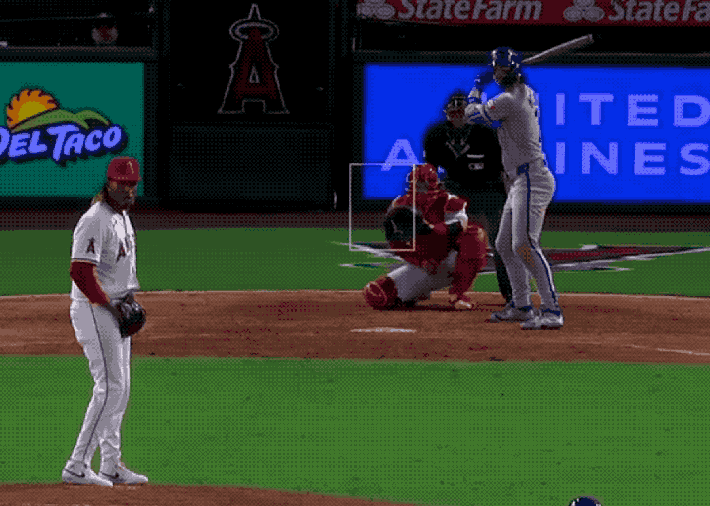After a six-week absence due to a broken bone in his foot from a hit-by-pitch, White Sox outfield prospect Braden Montgomery returned to action for his Arizona Fall League debut on Tuesday, reaching base all four times after banging a double in his first at-bat since early September. On Wednesday, he started in center field.
It's no small marvel that Montgomery looks primed to make a foot fracture look like a minor speed bump in his progression for the second time this calendar year, but the AFL initially scans as an unnecessary coda to a first full pro season that saw him hit .270/.360/.444 across three levels in 121 games. His late-season finish in Double-A saw him strike out a lot (28.7 percent) and be subjected to the Southern League tax on power production, but in broad strokes, Montgomery held up to a pro-level workload and hit everywhere the Sox sent him. Montgomery hasn't posted a sub-130 wRC+ anywhere since his freshman year at Stanford, and he seemingly arrives in Glendale without anything specific to prove.
But such a framing would elide something fundamental about Montgomery. When first asked about why Montgomery was being sent to the AFL, Sox farm director Paul Janish quipped, "Because he likes playing baseball."
But that got fairly close to the crux of the matter.
"I'm just excited to play some more talent that's going to be difficult," Montgomery said when asked on how he viewed his AFL assignment. "I enjoy a challenge. The first year of pro ball has certainly been a challenge. It’s a game of failure, so you’ve got to fail a different way and use those failures to round out your bulletproof approach."
"He's Bobby," said Jeremy Isenhower of Premier Baseball. "He's like all these dudes that have been special players throughout their lives because they're going to hit after the game, they're doing more. They're in the cage. Some of these college coaches think you're hitting too much. Am I hitting too much? That's not a thing."
Isenhower has been Montgomery's personal hitting coach since the tail end of his senior year of high school, when he was still set upon being a two-way player, and touted a very raw understanding of his swing for someone who would become a high first-round pick for his bat just three years later. With Premier Baseball's massive facility located in Jimmy Butler's hometown of Tomball, Texas, an hour's drive from Texas A&M’s campus, Montgomery's junior year transfer to play for the Aggies was geared around getting to work with Isenhower regularly throughout the season. Needless to say, neither felt the subsequent 27-homer campaign that followed was coincidental; not when they have so many common ideas on the value of relentlessness, and they have communicated consistently throughout a year that has seen Montgomery don four different uniforms.
"He thinks about hitting and baseball all day, every day," Montgomery said. "His mind goes just a million miles an hour. It's special how he works with these guys and what all he puts into it."
Oh, and the aforementioned "Bobby"? That's Bobby Witt Jr., and while Isenhower makes plenty of references to his other clients like Jorge Polanco, Alec Bohm or Blake Mitchell, it's the Royals' stalwart that Isenhower compares to in terms of mentality and how he's witnessed it drive their work.
While Isenhower will concede that Montgomery has swapped out some twitchiness for more size and strength compared to Witt, they share some foundational swing concepts of establishing a strong front side around which to pin their ability to generate explosive rotational force without spinning away from the plate, keeping their hands tucked close to their bodies to tighten the turn radius for getting the barrel out in front of their bodies, and thinking of their swing as starting with their hands rather than working from the ground up.


"The No. 1 thing is your hands and barrel has to move first. You've got to release the bat head to start swinging, and if you don't release the bat head to start the swing it's not going to work, because your body's going to start rotating," Isenhower said. "Turn into that front leg and then just hold that turn like it's started but it's not moving, and then you load and let your hands fire, and now that rotation will follow into that swing. As much power as you have generating through the barrel, it will also help rotate you so it's like a double combination of power. It's the same swing that we did with Bobby Witt Jr."
Witt was the same age as Montgomery is now during his rookie year in the majors, but Isenhower would concede that he struggled that season (relative to his abilities, at least) alongside what remains a career-high chase rate. Unlike Witt, Montgomery has an above-average amount of in-zone swing-and-miss in his game, but in both cases Isenhower sees the bones of their swings have remained the same, and they have shifted their indefatigable focus to largely other elements, or "buckets."
The emphasis on weight training is plainly evident anytime there's a side angle view of Montgomery's quadriceps when he digs into the batter's box. If he ever makes an offhand comment about the necessity of sleep, or even hydration, for making good swing decisions, that will be some residue of the principles established during his work with Isenhower. But the most obvious byproduct is Montgomery's indefatigable appetite for game-speed reps; an almost contempt for easy swings off flips when that time could be used facing the Trajekt, or live pitching, or different arm angles.
If Montgomery desires to be "bulletproof," he's come to believe it comes via being exposed to every conceivable variety of bullet.
"Preparation is key to every at-bat; most guys aren't prepared and that's why they stink," Isenhower said. "They go up there and they don't what they're about to get, what they're looking at. The [pitcher] comes from a different angle than what they're anticipating and all of a sudden they chase. That's why we do spin metrics, that's why they change pitchers where they stand on the mound, that's why they do [different] arm angles, so they can get hitters to think they know what they're doing and they recognize something with a slight difference, and it takes half a second or less to make a bad decision. Because [as a hitter] you've got to go, the answer is 'yes, I'm swinging' until 'wait it's not there.' So if you're not sure where to look, you're already beat."
This emphasis on reps underpins one of the central revelations -- or non-revelations, depending on your perspective -- of Montgomery's first professional season. The switch-hitter entered 2025 with the public reputation of his right-handed swing being well behind his left-handed one, to the point of driving speculation that he might have to give up switch-hitting altogether if he was big league-ready with one before the other.
Instead, Montgomery hit .263/.336/.539 and clubbed seven of his 12 homers from the right side. Isenhower said this performance actually dates back to Montgomery's junior season at A&M, when he realized that that no left-handed pitchers were available to throw live reps to his prized pupil in practice, leaving Montgomery without the frame of reference to set his swing plane to cover fastballs at the top of the strike zone. Like many switch-hitters and many very successful ones, Montgomery's natural right-handed stroke is less mechanically pristine than the left-handed swing that had to be meticulously built from scratch. But as they responded to the issue, results quickly followed.
"It's not the swing, you're not seeing it, you don't feel comfortable making the same decisions and getting a swing off like you do left-handed," Isenhower said. "Basically he went and did a lot of live [batting practices], and then in regionals that year his first at-bat against a left-handed pitcher, he hit a homer. You see? Let him see it and he's good. Ask any hitter in the world: The more they see it, the better they are."
"I'd say it's been it's been really cool to to have everyone else see what I had already seen with my right side," Montgomery said.
There have been and continue to be an elevated number of strikeouts in Montgomery's game. In time, that will require the 30-homer potential he flashes to become realized production if he's going to become a franchise fixture for the White Sox, and as both Isenhower and team officials have forecasted, a culture-setter for his team whose preparation level rubs off on teammates who long to mirror his success. That's part of the current work.
"If you want to get drafted and play in the minor leagues, create power. If you want to play a long time in the big leagues, created precision," Isenhower said.
But asked to predict what's next in Montgomery's development, and where his game goes from here, and he argues that's to be determined by his competition ... in a manner of speaking.
"Braden is always going to be prepared," Isenhower said. "The reason [Michael Jordan] advanced is because you beat him, he got beat. So then he figured out his discipline and preparation and made it to where he couldn't get beat. That's Braden. Is he going to fail? Yeah, he's going to fail. But you better watch out, because once he fails, you better not come back doing the same thing. Because he's going to get your ass next time, because he's going to be prepared for that. The more you beat him, you're just creating a monster. Does that make sense?"
Isenhower ended a number of technical explanations with that four-word question, and with good reason, as a lot of his talk about turning into the front hip can benefit from reading it while watching video -- repeatedly.
But if the original question was why Montgomery is playing in the AFL at all, that now seems answered.






